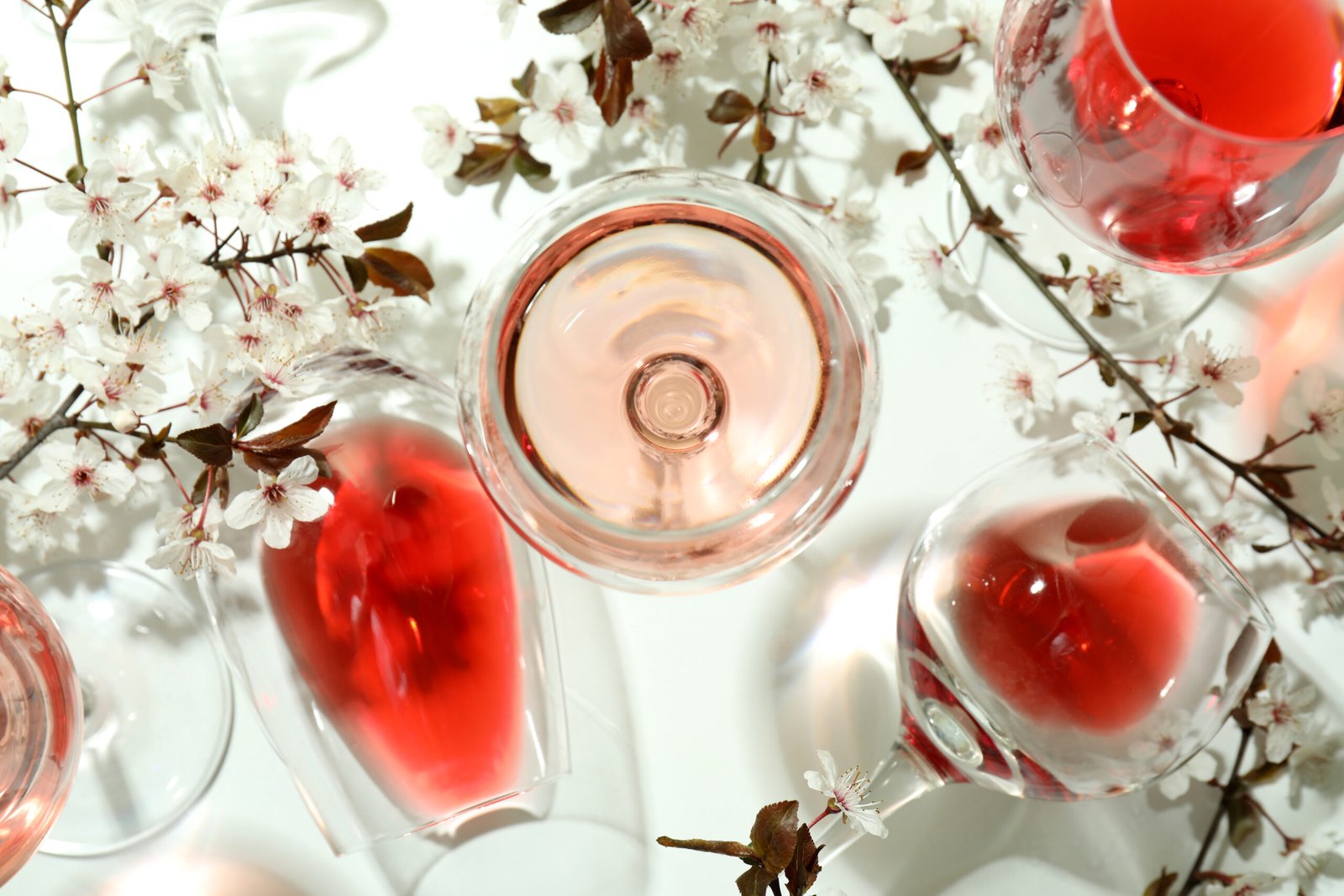How Does Rosé Wine Compare to Red and White Wines?

Rosé wine has gained immense popularity in recent years, thanks to its refreshing and versatile nature. With its delicate pink hue and a flavor profile that bridges the gap between red and white wines, it’s a choice that appeals to a wide range of wine lovers. But how does rosé wine compare to its more established counterparts, red and white wines? In this article, we’ll explore the key differences between these three types of wines and help you understand why rosé might be your next favorite choice.
1. The Basics: What is Rosé Wine?
Rose wine is made from red grapes, but unlike red wine, the grape skins are only left in contact with the juice for a short time. This minimal skin contact gives rosé its signature pink color, which can range from pale salmon to deep magenta, depending on the grape variety and winemaking process. The result is a wine that combines the fruity notes and acidity of white wine with some of the depth and complexity of red wine.
2. How Rosé Wine Differs from Red Wine
The most significant difference between rose wine and red wine lies in the winemaking process and the grape skins. In red wine production, the grape skins are left in contact with the juice throughout fermentation, which imparts a rich color, tannins, and deep, complex flavors. Red wines also tend to have higher tannin levels, which contribute to their full-bodied structure.
In contrast, rosé wine undergoes a much shorter maceration period with the grape skins, which gives it a lighter body and less tannin. As a result, rosé is usually more refreshing and lighter in style compared to red wine, which can often feel heavier and more intense.
Flavor Profile:
- Red Wine: Full-bodied with bold flavors like dark berries, plum, and spices. Rich tannins provide structure.
- Rosé Wine: Lighter in body, with fruity flavors like strawberries, raspberries, and citrus. Less tannin, more refreshing acidity.
Food Pairings:
- Red Wine: Pairs well with hearty dishes like steaks, roasted meats, and strong cheeses.
- Rosé Wine: Ideal for lighter fare such as seafood, salads, chicken, and Mediterranean dishes. It’s also excellent with grilled vegetables and sushi.
3. How Rosé Wine Differs from White Wine
White wine is made from green grapes or red grapes with the skins removed, resulting in a clear juice. The winemaking process for white wine usually involves no skin contact, which results in a wine that is even lighter and crisper than rosé. White wines are known for their bright acidity and fruity or floral flavors, and they can range from bone dry to sweet.
Rosé, while still light and crisp, has a greater depth and complexity than most white wines, thanks to the brief skin contact during fermentation. This brief contact gives rosé a bit more body and a slightly more complex flavor profile, with subtle notes of red fruit that you won’t typically find in white wines.
Flavor Profile:
- White Wine: Light and crisp with flavors of green apple, citrus, and tropical fruits. High acidity.
- Rosé Wine: A balance of fruity and floral flavors, with a touch of complexity and a rounder mouthfeel.
Food Pairings:
- White Wine: Pairs well with seafood, poultry, and light pasta dishes.
- Rosé Wine: Its versatility makes it a great match for a wide range of foods, including grilled meats, salads, seafood, and cheese platters.
4. The Versatility of Rosé Wine
One of the reasons rosé wine is so popular is because of its versatility. The balance of acidity, fruitiness, and lightness makes it ideal for a wide range of occasions. Whether you’re enjoying a sunny afternoon on the patio, hosting a barbecue, or serving a romantic dinner, rosé is an excellent choice.
Its light body and refreshing character make it a great option for warm weather, but rosé can also pair wonderfully with heavier dishes when you’re craving something in between the boldness of red wine and the brightness of white wine.
5. Why Choose Rosé Wine Over Red or White?
While red and white wines are staples for many wine drinkers, rosé wine offers something in between. If you find red wine too bold or tannic, but you still want some of the complexity and depth, rosé could be your ideal choice. On the other hand, if you enjoy the crispness of white wine but want something with a bit more character, rosé provides that perfect middle ground.
In terms of food pairings, rosé can be just as versatile as red or white wine, complementing everything from light salads and seafood to hearty meats and cheeses. Its wide range of flavors and refreshing profile make it a great go-to for any occasion.
Box of Wine: Your Source for Quality Rosé Wine
Looking to try some exceptional rosé wine? At Box of Wine, we offer a curated selection of rosé wines that will delight your taste buds and elevate any occasion. Whether you’re new to rosé or a long-time fan, our wine subscription service delivers tailored boutique wines straight to your door, ensuring you always have a bottle of rosé (or red, or white) ready to enjoy.
With Box of Wine, you can explore a wide variety of rosé wines, including both dry and sparkling options, perfect for every taste. Plus, with our next-day wine delivery service in Ireland, you won’t have to wait long to enjoy a premium bottle of rosé.
Rosé wine is a unique and versatile option that combines the best characteristics of both red and white wines. Its refreshing acidity, fruity flavors, and lighter body make it perfect for a wide range of occasions and food pairings. Whether you’re a red wine lover looking for something lighter or a white wine enthusiast seeking a bit more depth, rosé offers a great balance that suits all palates.
Buy Wine Online from Box of Wine, Ireland’s best tailored-to-your-taste wine subscription service, and have premium rosé wine delivered to your door every month! Explore our carefully selected rosé options and enjoy top-quality wine without the hassle. Next-day delivery in Ireland and a selection of boxed wines that guarantee satisfaction every time!
